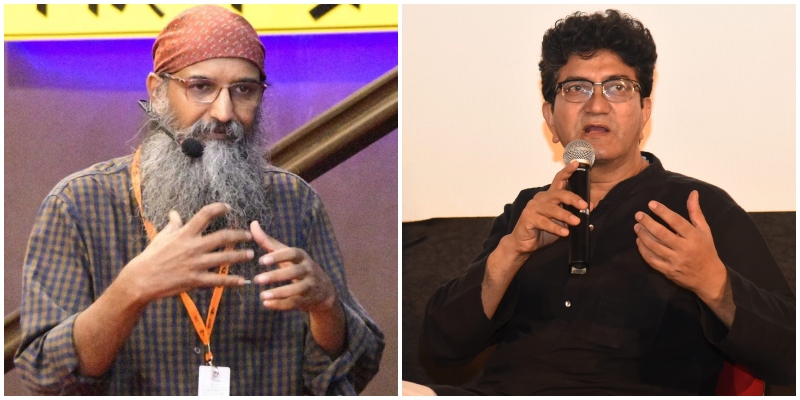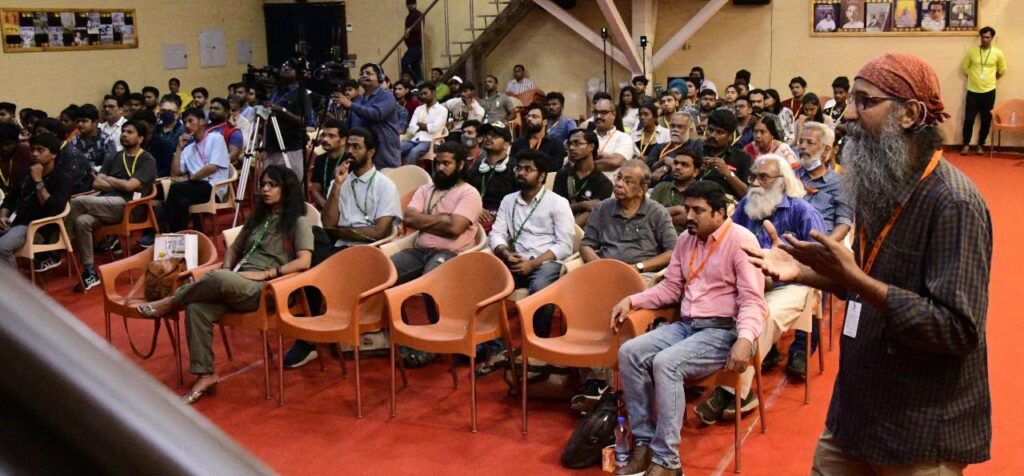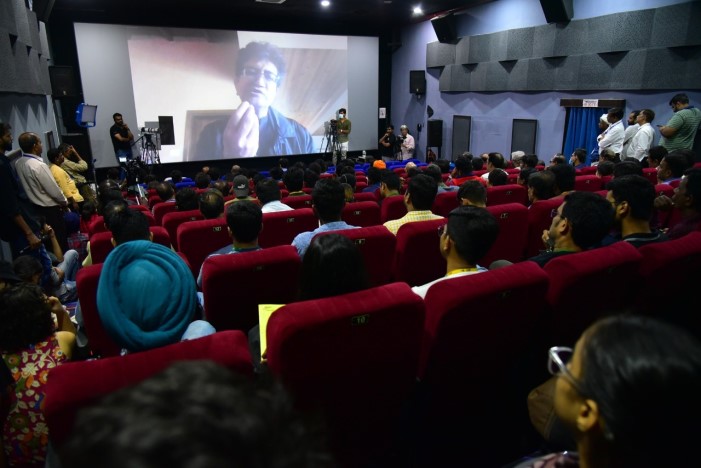
The recently concluded 17th edition of the Mumbai International Film Festival followed the tradition of organising masterclasses on various topics related to the film industry.
One was on ‘The Art of Storytelling’ conducted by Prasoon Joshi who is a writer, poet, lyricist, screenwriter and communication specialist and the other masterclass was conducted by PC Sanath on ‘VFX: The ever-evolving tool for storytelling’.
The masterclass by PC Sanath was more of a demonstration workshop. Sanath is the co-founder and director of Firefly Creative Studio which is in Hyderabad. For the past two and a half decades Sanath has been creating visual effects for films and he has been a VFX supervisor for big films like Baahubali: The Beginning, Robot, and others. He began the session by saying that he ventured into animation because he loved storytelling.
Sanath took the audiences on a journey of VFX and the history of filmmaking simultaneously. He talked about the filmmaking process right from the time of French filmmakers Lumière brothers, Georges Méliès to Dadasaheb Phalke in India.
He said that when a filmmaker or a technician is not able to achieve something in a film, they turn to the VFX artists to make that magic happen. According to him, earlier there was minimal use of VFX in films, but now one cannot imagine a single film without VFX. About VFX he added, “The limitation is your imagination for this tool (VFX).”
As the medium of cinema evolved over the years, VFX as a tool also evolved by adopting new emerging technologies. Sanath highlighted the fact that the use of VFX has changed over the years. Earlier it was used for magical effects, action sequences, digital makeup, and reconstruction of location with the actual references or photo references and now VFX is pushing boundaries as it is used to create a fantasy world, supernatural characters, realistic animals, digital doubles. Also, showing a scene of destruction like a tsunami, forest fire or any natural disaster or an action sequence of this effect is possible to create using VFX. Previs is the visual recipe for the film and is extensively used today.
Now the industry is using artificial intelligence (AI) based tools for the VFX. This masterclass also demonstrated how visual effects has aided filmmakers in conceptualising and fulfilling their cinematic ambitions, as well as the potential that VFX presents to future storytellers as new frontiers are explored with tools such as Augmented Reality (AR) and Virtual Reality (VR).
A well-known name in the Indian film industry, Prasoon Joshi’s masterclass touched upon various aspects of writing and storytelling through anecdotes and metaphors, his classic style of communicating things. According to him, first-hand truth is of utmost importance when one is starting to write a story and one should start writing about the things that they know and feel, it helps in setting the tone of the story.
He gave advice on approaching the story or subject according to one’s choice and convenience because everyone has and should have their own unique approach to the story which will make it authentic. In the context of Bhaag Milkha Bhaag, Joshi mentioned that stories are narratives and the narrative of a person depends on how you approach it. He went on to talk about parkaya pravesh which means to enter into someone’s body through the soul or mind. Continuing in the context of Bhaag Milkha Bhaag and how to make the film more real to the audiences, he said that even if one tries to take the best approach for the film, one cannot fully do parkaya pravesh but one can give an authentic touch to the film. “You can’t understand the absolute truth but can understand the vantage point.”
While talking about his notable work in Taare Zameen Par, his personal journey and experiences helped him in writing the lyrics of songs. He is of the opinion that a personal journey is very necessary to create a nice work. The lyrics of the title song from Taare Zameen Par had words from his native place and he observed the kind of words that kids say while talking to others, this all constituted the part of his creative process and he said, “Do not cut yourself from your roots or reality, you can’t get any actual content if you cut yourself from your roots.”
Towards the end, he said that filmmaking should be made easy for everyone and the centre point of cinema making should be the story and not the process.



